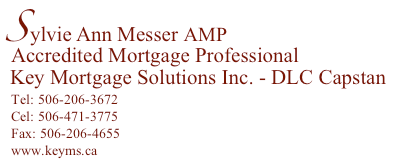First: Pay Off Your Debt
It's a common mistake for home-buyers-to-be: They focus on saving as much money as possible for a down payment instead of paying off other debts. A better approach is to use extra cash to eliminate credit-card and other high-interest consumer debt, even if that means you can put down less on your future home.
Why?
First, credit-card debt is expensive and limits your ability to save. Second, credit-card debt will limit how much you can borrow. That's because lenders won't allow your total monthly debt service which includes payments for credit cards, student loans and car loans, as well as homeowner's insurance, property taxes and a mortgage to exceed 40% of your gross income,
How Much Can You Afford?
The answer to that is a function of two things: How much you can borrow and how much of a down payment you can muster. As a rule of thumb, your annual mortgage payment, taxes and homeowner's insurance shouldn't exceed 28% of your gross income. Then determine how much cash you have for a down payment, leaving yourself enough left over to pay those pesky closing costs, which can add up to 3% to 5% of your total home's value (plus a little something extra for emergency repairs once you move into your new home).
Types of Loans
Now you're ready to start shopping around for the right loan. As we said, a first-time home buyer with a steady job and good credit can put down as little as 5% these days. These loans are more available, and more reasonably priced. The more money you can muster for a down payment, the more options you will have. A new "start-up mortgage" allows borrowers who can put down 10% to qualify for a loan on a smaller salary than with a 5% down payment. Private lenders are also coming up with their own programs to tap into the first-time home buyers' market. Program for buyers with a 10% down payment: Instead of charging for mortgage insurance, the savings-and-loan builds the cost into the interest rate, making it tax-deductible (which mortgage-insurance premiums aren't).
And if you really want to get creative and avoid paying mortgage insurance altogether, you can take out two piggybacked loans. These are also referred to as 80-10-10s. First, you need to put down 10% of the home's value. Then, you take out a primary loan, usually a 30-year fixed-rate mortgage, for 80% of the home's value. This interest rate should be competitive. For the remaining 10%, you'll need to take out a 15-year fixed-rate mortgage at a far less competitive rate as much as two points higher than the market. Combine the two monthly costs to come up with your total mortgage payment. Due to the complexity, a piggybacked loan is a bit more expensive than a traditional mortgage and carries higher closing costs. Still, they tend to be cheaper than paying private mortgage insurance.
Questionable Credit
Worried you don't have perfect credit? Thanks to Key Mortgage Solutions Inc. "expanded approval" program, consumers with slightly blemished credit can also qualify for mortgages at competitive rates. "These are people who might not qualify for fair-market value rates from traditional lenders," If your credit's still not good enough for one of Key Mortgage Solutions Inc.'s loans, you may yet qualify for our Rent to Own program. However, since these loans are higher risk, the interest rates shows to be slightly higher than a regular mortgage. When a candidate shows interest in owning his first house but do not fit regular standards, Key Mortgage Solutions Inc. offer a flexible credit repair plan that is custom made to fit each and everyone’s needs.
Visit Key Mortgage Solutions Inc. at www.keyms.ca and apply online to see which options suits you best.
An agent will be in contact with you in within the hour upon application. (During regular business hours, allow 24 hours on weekend, holidays and non-business hours)


No comments:
Post a Comment